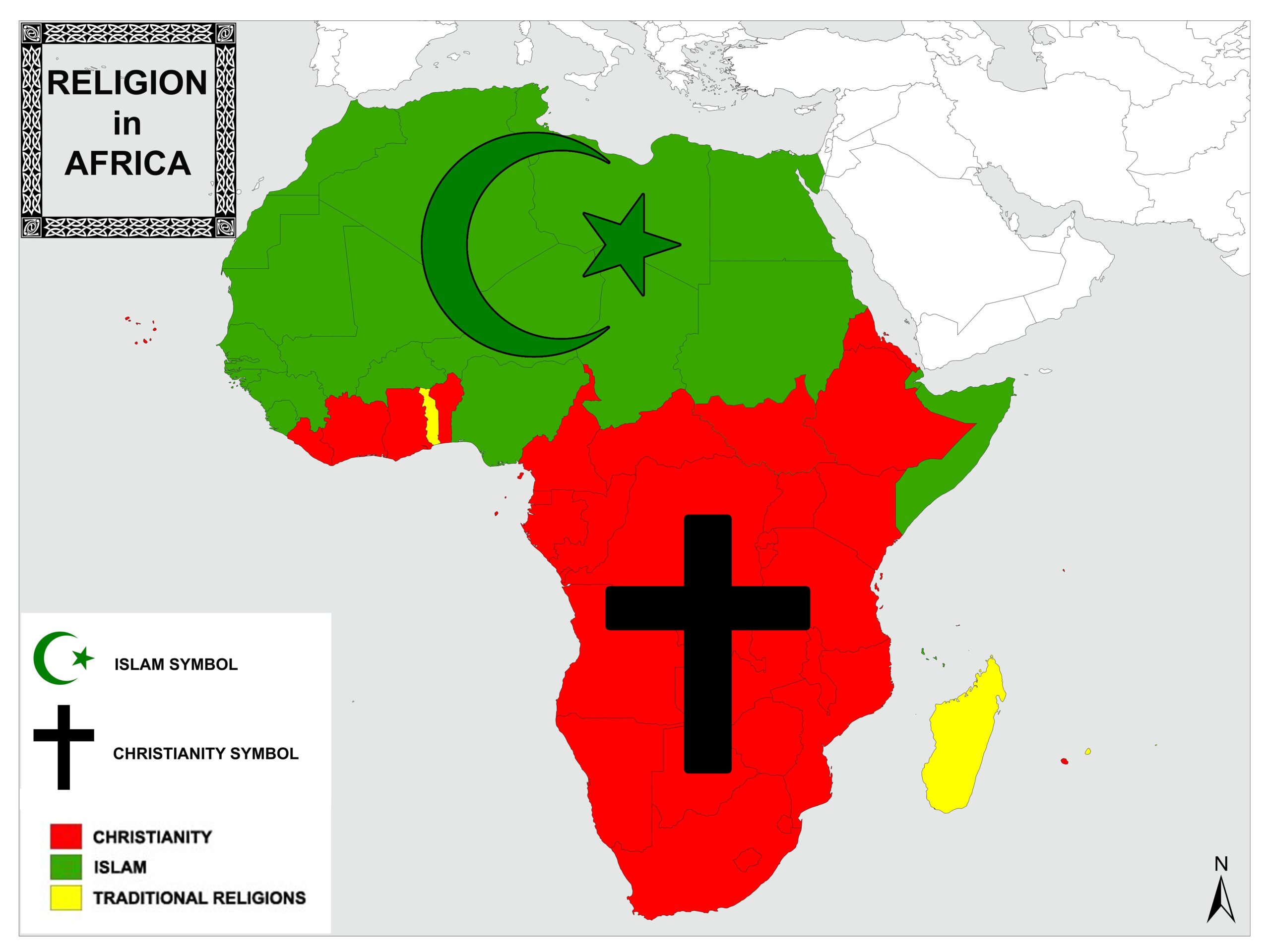A Brief Overview of “Africa” in Black Religion

Black people in the Americas arrived here through the Atlantic Slave Trade, a process in which African people, largely from West Africa, were captured, transported across the Atlantic Sea, and forced into slavery. The Atlantic Slave Trade resulted in the creation of an African or Black Diaspora; today, Black people can be found in all across the globe, from the United States to the Caribbean to Europe. Despite being spread out across hundreds of thousands of miles, there remains significant cultural and social links between Black people across the diaspora, and this is what makes the Black Diaspora a topic worth studying for scholars and historians. In his essay “Perspectives for the Study of African American Religions in the United States,” Charles Long outlines the main historical function and purpose of Africa in the lives, and more specifically, in the religious and nationalist movements of Black people as a historical reality and religious image.
While the Atlantic Slave Trade and the institution of the slavery in the United States wiped slaves of their cultural and linguistic connections to Africa and African religious forms, the long-lasting influence of Africa on the religious practices of slaves in America is evident. For example, many slaves would hold secret meetings in the woods, away from the peering eyes of their master and overseer; Long states that these meetings were related to conjuring, using the language of the slaves themselves, which is reminiscent of Haitian Voodoo practices. This demonstrates Long’s idea of Africa as a historical reality for those who survived the Atlantic Slave Trade; the religious practices of Black slaves reflects this concept. Given the unique position of the slave, his religiousness can be thought of as a kind of melding of African religious practices/styles and Christianity. This is still seen in modern America, where the significance of Africa as a religious image and historical reality shines through in Black religious and nationalistic movements; one example of this is seen in Rastafarianism.
Rastafarianism is a Black monotheistic religion which developed in Jamaica during the 1930s; its followers are known as Rastafarians, or Rastas. Rastas regard Ethiopia as the homeland of all Black people, to which we must return, and many venerate Haile Selassie, a former Ethiopian emperor, as Jah incarnate or a prophet. Jah refers to God and is believed to live within each individual. Here is an example of Africa as the guiding image for a specific Black religious movement; this also points towards the religious meaning of land, especially for a “landless people” like ourselves. This landlessness is a direct result of the taking of African people and their subsequent enslavement in the Americas, while denying them connection or claim to their new home. Historian Eddie Glaude states that Africa is “a place that simultaneously marks a condition of living prior to the fateful encounter with white Europeans and one tragically disrupted by them as well.” Scholar Judith Weisenfeld offers that the significance of Africa as a place of origin or promised land to which we must return amongst “diaspora Blacks” highlights the profound spiritual connection between the two.



